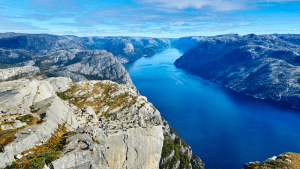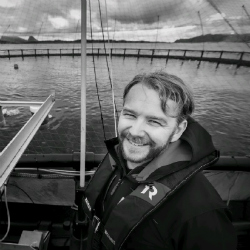

Robert Eriksson, CEO of Sjømatbedriftene, believes blockchain going forwards will increase the competitive edge of the industry. “Norwegian seafood is known for its quality. Yet we still do not have the ability to trace where the fish came from, how it was grown or how it was stored. This creates the potential for fraud and food waste.
“Blockchain can help eliminate these problems with a transparent, accountable record of where each fish came from. We believe that this is only the start of something that will mean a great deal for the industry by creating more sustainable food production, which in turn will increase the return for producers.”
The justification and attraction
Norwegian seafood has a reputation for quality. As a country, Norway exported more than 2.7M tons of seafood in 2019 (allegedly equivalent to 25K meals/minute).
At the same time, those seafood consumers who care deeply about sustainability want to know more about:
- where the fish they are or will eat come from
- the growing and storage conditions for those fish
- reducing food waste.
According to a recent IBM study, 71% of consumers indicate that:
- traceability is important to them
- they are willing to pay a premium for brands which offer it.
Customers are also demanding more documentation about the food they eat. In this context, blockchain can help seafood producers create a ‘single version of the truth about supply chain events. In turn, this enables:
- consumers to trace their seafood products directly back to the source
- producers to tell stories about the products, where they come from and how even to make suggestions about to prepare them.
The ‘Sea to Table’ blockchain
The new ‘Sea to Table’ blockchain network will allow customers in-store to:
- identify the fjord where a fish came from
- see when its catch happened
- understand what feed it ate
- decide whether the fish growing facility uses sustainable methods.
Additionally, authorised third parties will be able to inspect the data. For example, customs agencies will be able to access the volume and location of shipments data and so expedite customs clearances.
There is a potential extra benefit, attributable to sharing information across the supply chain. Seafood producers who have invested in quality hope this will mean they can charge a premium, thereby increasing the incomes for those who catch the fish.
The blockchain network uses IBM Blockchain Transparent Supply. It is a new offering from IBM using the underlying technology behind Food Trust. It enables organisations and consortia rapidly to build out their own sustainable blockchain-based ecosystem for improved supply chain operations across numerous industries. Key aspects of IBM Blockchain Transparent Supply are its:
- promotion of transparency and collaboration
- members being able to manage their own membership
- the secure sharing of documents between members
- permanent recording of the history and lifecycle of physical and digital assets.
Norwegian seafood companies already adding data
Several Norwegian seafood companies are now in the process of putting data onto the network. One of these companies is Kvarøy Arctic. It is a leading provider of naturally sea farmed salmon. It will soon begin delivering products to leading retailers in the United States and Canada using the tracking and provenance technology. BioMar, a leading provider of high-grade fish feed, has also joined the network. This allows Nordic seafood companies to provide insight into the origin and quality of seafood as well as the quality of feed the fish consume.

“The Norwegian seafood industry exports more than $800 million worth of fish a year, making this an incredible opportunity to improve the quality of the products Norway shares with the world. While this specific application of the technology will be used in the seafood industry, we feel it has great potential in other prominent Nordic industries such as agriculture and retail. Working through the Atea Innovation Center, we will help network members innovate using the platform and drive new efficiencies,” says Steinar Sønsteby, CEO of Atea ASA.
Enterprise Times: what does this mean
Blockchains can enhance flexibility and transparency. The IBM Blockchain Transparent Supply provides a means for IBM customers to launch their own blockchain network alongside mutual interest (ecosystem partners) along with common branding. This means ‘Sea to Table’ network members gain the option to:
- develop their own governance
- determine how and what information to share.

The intended result is that customers for fish will be able to learn, at the point of purchase (just before the ‘table’) about the seafood which they may be about to buy (and eat) – hence ‘Sea to Table’. Demonstrating that a fish is not only safe to consume but was also produced sustainably and healthily should establish confidence.
As Alf-Gøran Knutsen, CEO of Kvarøy Arctic puts it: “Blockchain lets us share the fish’s journey from the ocean to the store. This is now more timely than ever, as consumers want more information about where the food they eat comes from.”


























